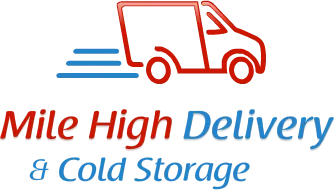Cross-Docking plays a critical role in modern supply chain management by streamlining the flow of goods and optimizing logistics operations. It enables businesses to respond quickly to changing market demands, minimize lead times, and improve order fulfillment speed. By reducing the need for warehousing and storage, Cross-Docking can lead to cost savings and enhanced supply chain efficiency.
While Cross-Docking offers numerous benefits, it is essential for businesses to understand the costs associated with implementing and utilizing Cross-Docking services. By understanding the cost components of Cross-Docking, businesses can assess its feasibility and compare it to traditional warehousing or other logistics strategies.
Cross-Docking services encompass various cost components, each contributing to the overall expenses involved in efficiently transferring goods from inbound to outbound transportation. To make informed decisions about the implementation of cross-docking in their supply chain, businesses should be mindful of the following cost components of cross-docking services:
1-Receiving Costs
Handling Fees for Incoming Shipments:
Cross-Docking facilities charge handling fees for unloading goods from incoming shipments. These fees are based on the volume, weight, and complexity of the products being received. The efficiency of the unloading process and the equipment used can also impact handling fees.
Inspection and Sorting Charges:
Upon arrival, products need to be inspected for quality and accuracy. Any damaged or incorrect items must be identified and dealt with accordingly. Additionally, products must be sorted based on their final destination or outbound transportation requirements. Inspection and sorting charges account for the labor, time, and technology involved in these critical processes.
2-Storage Costs
Temporary Storage Fees:
While the primary goal of Cross-Docking is to minimize storage time, some goods may require temporary storage before being loaded onto outbound transportation. Cross-Docking facilities may charge temporary storage fees for the short-term holding of products. These fees depend on the duration of storage and the amount of space required.
Handling Charges for Storage and Retrieval:
In cases where temporary storage is necessary, handling charges are incurred for moving products in and out of storage. Efficient handling during storage and retrieval processes ensures a smooth workflow and minimizes handling costs.
3-Transportation Costs
Inbound and Outbound Transportation Expenses:
Transportation costs are a significant component of Cross-Docking expenses. Inbound transportation refers to the cost of moving goods from suppliers or manufacturers to the Cross-Docking facility, while outbound transportation involves transporting goods from the facility to retailers or end customers. Factors such as distance, mode of transportation, and fuel prices influence transportation expenses.
Freight Forwarding and Logistics Fees:
When goods are transported via third-party carriers or freight forwarders, additional fees may apply for their services. These fees include administrative costs, documentation, and coordination with transportation providers.
4-Labor Costs
Personnel Expenses for Managing Cross-Docking Operations:
Cross-Docking requires skilled personnel to coordinate and execute the rapid transfer of goods. Labor costs encompass wages, benefits, and other overhead expenses associated with Cross-Docking staff, including supervisors, warehouse workers, and logistics personnel.
Training and Skill Requirements for Cross-Docking Staff:
Properly trained staff is crucial for efficient Cross-Docking operations. Businesses invest in training programs to ensure that employees understand the process, handling protocols, safety measures, and the use of technology and equipment. Training and skill development contribute to the overall labor costs.
Types of Cross-Docking Pricing Models
When considering Cross-Docking services, businesses have several pricing models to choose from. Each model comes with its own advantages and considerations, and selecting the most suitable pricing structure is crucial for optimizing costs and ensuring a successful logistics strategy.
1-Flat Fee
The flat fee pricing model offers a straightforward and predictable cost structure, as businesses pay a fixed amount for the Cross-Docking services provided. This simplicity makes budgeting and financial planning easier, as companies know the exact expenses associated with each shipment.
However, the flat fee may not always align with the actual volume or complexity of the Cross-Docking operations. Companies with varying shipment sizes or seasonal fluctuations may end up paying the same fee even during periods of lower or higher demand.
Additionally, if the volume significantly exceeds the anticipated levels, businesses might find themselves facing capacity constraints and potential delays.
The flat fee pricing model is beneficial for companies with stable and predictable shipment volumes. Businesses that have consistent Cross-Docking needs throughout the year can benefit from the simplicity and ease of budgeting offered by a fixed-rate pricing structure. It is also advantageous for companies that prioritize cost stability over flexibility in their supply chain operations.
2-Per Pallet or Per Unit Charge
Under the per pallet or per unit charge model, businesses pay a set fee for each individual pallet or unit handled during the Cross-Docking process. This model provides a more granular and accurate representation of the actual service usage, allowing companies to pay based on the specific quantity of goods transferred.
To calculate costs under this model, businesses multiply the agreed-upon per pallet or per unit rate by the total number of pallets or units handled during the Cross-Docking operation. This pricing approach ensures that companies only pay for the actual services used, making it suitable for businesses with fluctuating shipment volumes or varying product sizes.
3-Hourly or Daily Rate
The hourly or daily rate pricing model charges businesses based on the amount of time their goods spend in the Cross-Docking facility. Companies are billed for the hours or days during which their products are handled, sorted, and staged before being loaded onto outbound transportation.
The total cost under the hourly or daily rate model depends on various factors, including the:
- Efficiency of Cross-Docking operations
- Speed of handling
- Number of hours or days products spend in temporary storage
Efficient operations and quick transfers lead to lower costs, while delays or inefficiencies can result in higher expenses.
Choosing the most suitable pricing model depends on a company’s specific logistics needs, shipment volume variability, and budget considerations. By understanding the advantages and considerations of each pricing model, you can make an informed decision that aligns with their supply chain goals and leads to cost-effective and efficient Cross-Docking operations.
Additional Cost Considerations: Specialized Goods
While Cross-Docking is a versatile logistics strategy, it may pose unique challenges and incur additional costs when dealing with specialized goods. These products require extra care and handling due to their unique characteristics, fragility, or specific storage requirements. Some of the challenges and associated costs include:
- Perishable Goods: Perishable items, such as fresh produce, flowers, or pharmaceuticals, have limited shelf life and require temperature-controlled handling. Maintaining the cold chain during Cross-Docking operations necessitates specialized facilities and equipment, leading to higher operational costs.
- Hazardous Materials: Handling hazardous materials, such as chemicals or flammable substances, requires compliance with stringent safety regulations. Cross-Docking facilities must meet safety standards and implement specialized protocols, which can increase handling fees and operational expenses.
- Oversized or Heavy Items: Large or heavy products, like industrial machinery or oversized equipment, may require specialized handling equipment and additional labor, leading to higher handling charges.
- High-Value Goods: Luxury items or high-value products may require enhanced security measures during Cross-Docking to prevent theft or damage, which can add to the overall cost.
It’s crucial for businesses to discuss these specialized handling requirements with Cross-Docking service providers and factor them into the overall cost analysis. Working with experienced logistics partners who have expertise in handling specialized goods can ensure that the appropriate measures are in place, minimizing the risk of damage and additional expenses.
Conclusion
Understanding the cost structure of cross-docking services can not only help you estimate the cost of implementing cross-docking in your supply chain process but also determine whether it is feasible for your business in specific.
If the product you are manufacturing involves a JIT manufacturing approach or short storage durations due to variable demand, then you can benefit tremendously from hiring a cross-docking service.
At Mile High Delivery & Cold Storage, we understand the importance of timely deliveries and help different kinds of businesses manage their supply chain operations by keeping the costs as low as possible! Contact us today to get a free quote.

